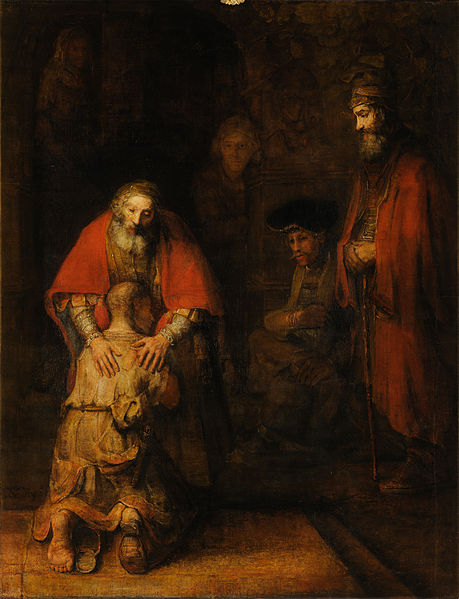
This is The Return of the Prodigal Son by Rembrandt. (1661–1669) This is one of Rembrandt’s final works,
completed within in two years of his death in 1699. This painting is 262 cm x 205 cm and
currently resides in the Hermitage Museum in Saint Petersburg. This painting depicts the moment in the
biblical story of the prodigal son’s return to his father. As this story is told the father gives his inheritance
to both of his sons early and one stays on the farm to work (man of right) and
the other goes out to spend his fortune on prostitutes, and wine (Man on knees). After the second son has spent all of his
fortune and in living in extreme poverty he returns to his father to beg for
forgiveness and to be allowed to work on the farm. The father rejoices in the prodigal son’s
return but the brother is angered at his actions.
But he answered his father, "Behold, these many years I
have served you, and I never disobeyed a commandment of yours, but you never
gave me a goat, that I might celebrate with my friends. But when this, your
son, came, who has devoured your living with prostitutes, you killed the
fattened calf for him."
—Luke 15:29–30, New King James Bible.
—Luke 15:29–30, New King James Bible.
The father then replies:
"But it was appropriate to celebrate and be glad, for
this, your brother, was dead, and is alive again. He was lost, and is
found" (Luke 15:32) New King James Bible.
This story is said to have moved Rembrandt, as described in
Simon Schama Book Rembrandt’s Eyes, and before this painting he made a
number of drawings, etches, and paintings before this final masterpiece was
completed.
Rembrandt’s Eyes
Web Art Gallery:
Rembrandt the thinker: The structural conception of Rembrandt’s
early pictures:
Other Sources:
No comments:
Post a Comment